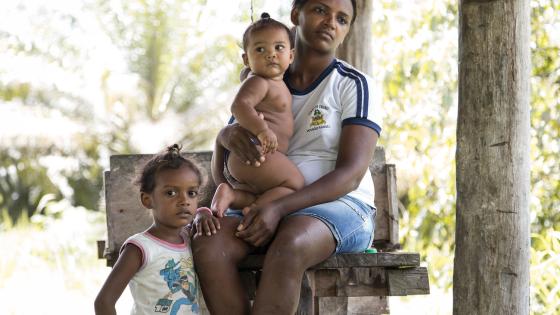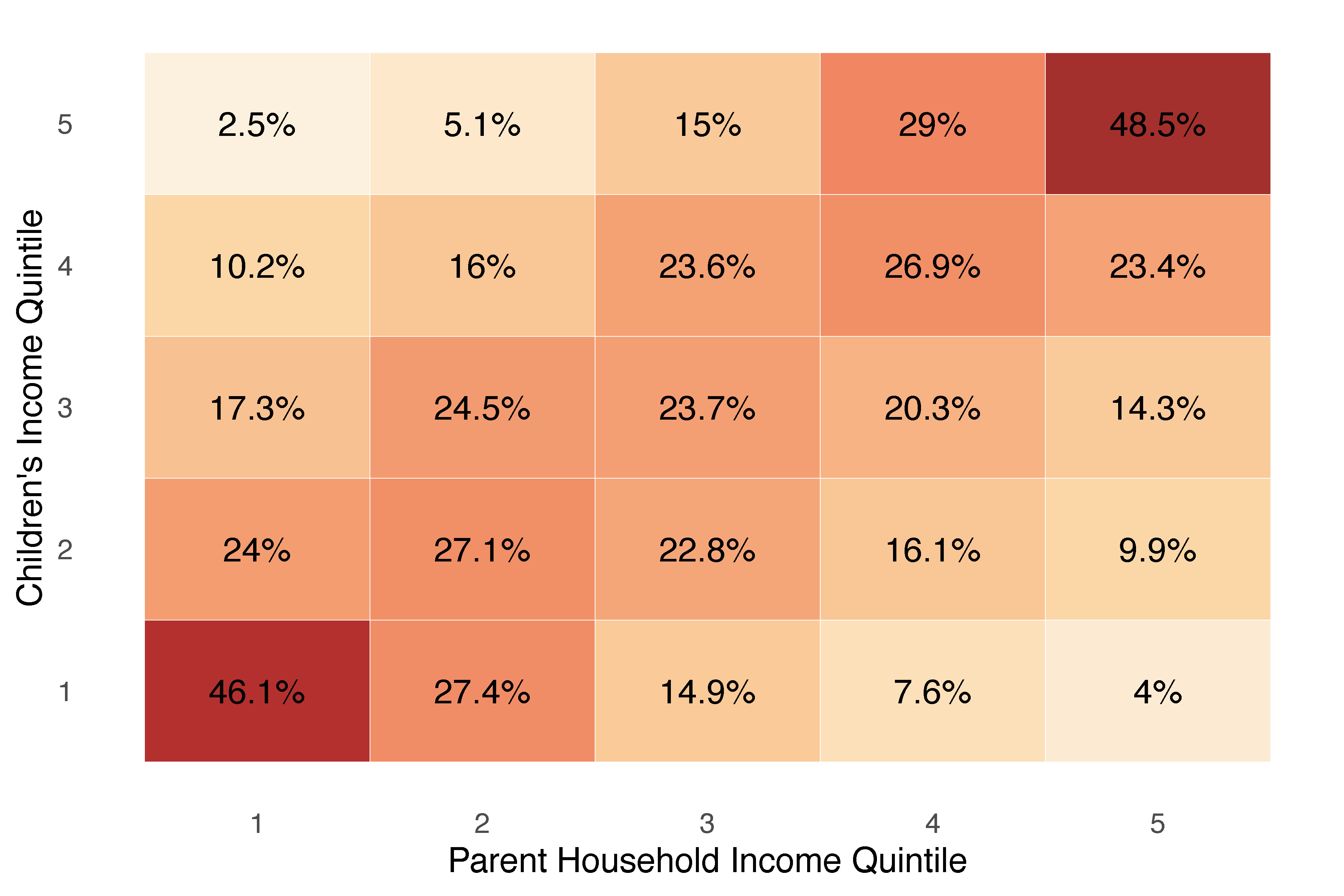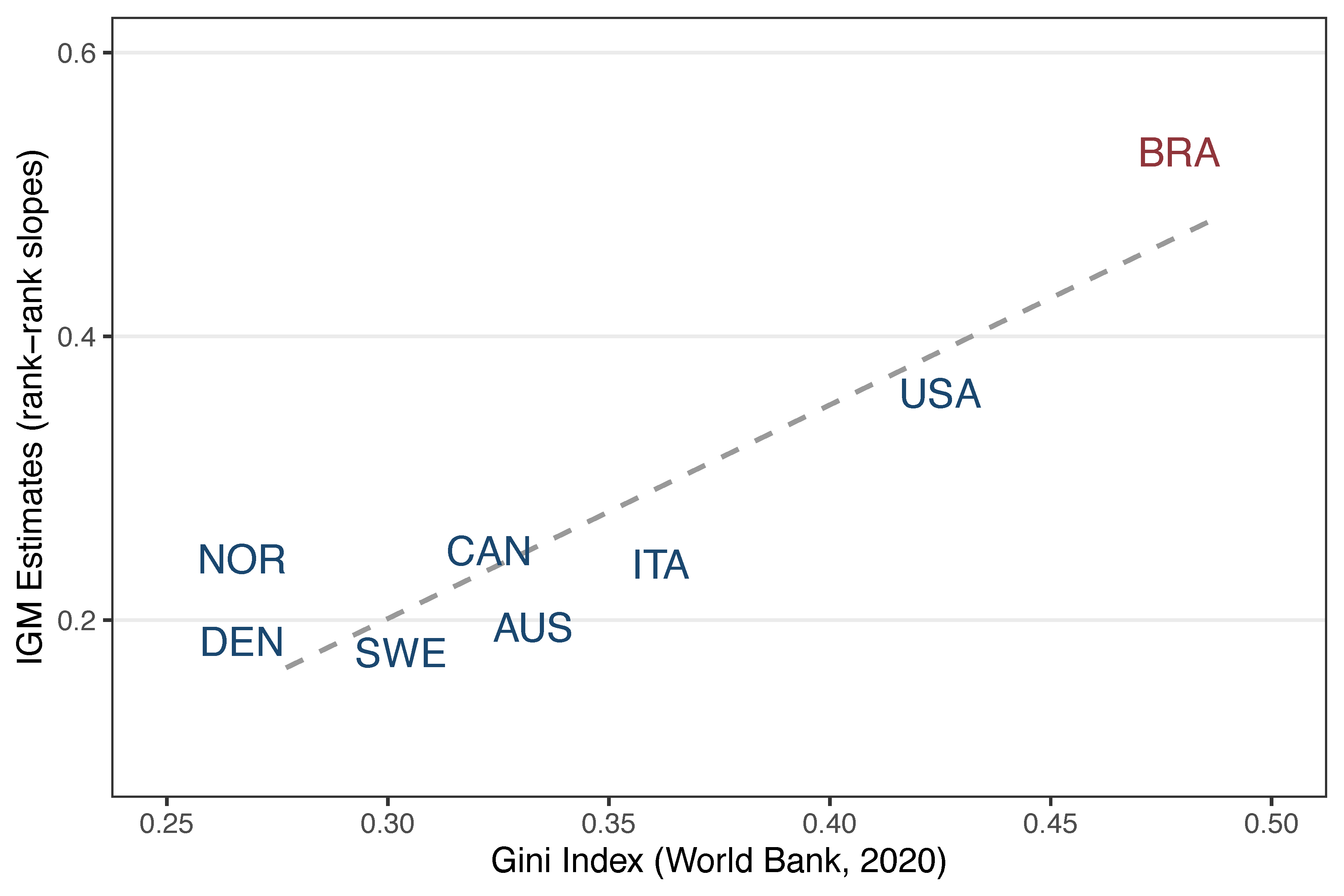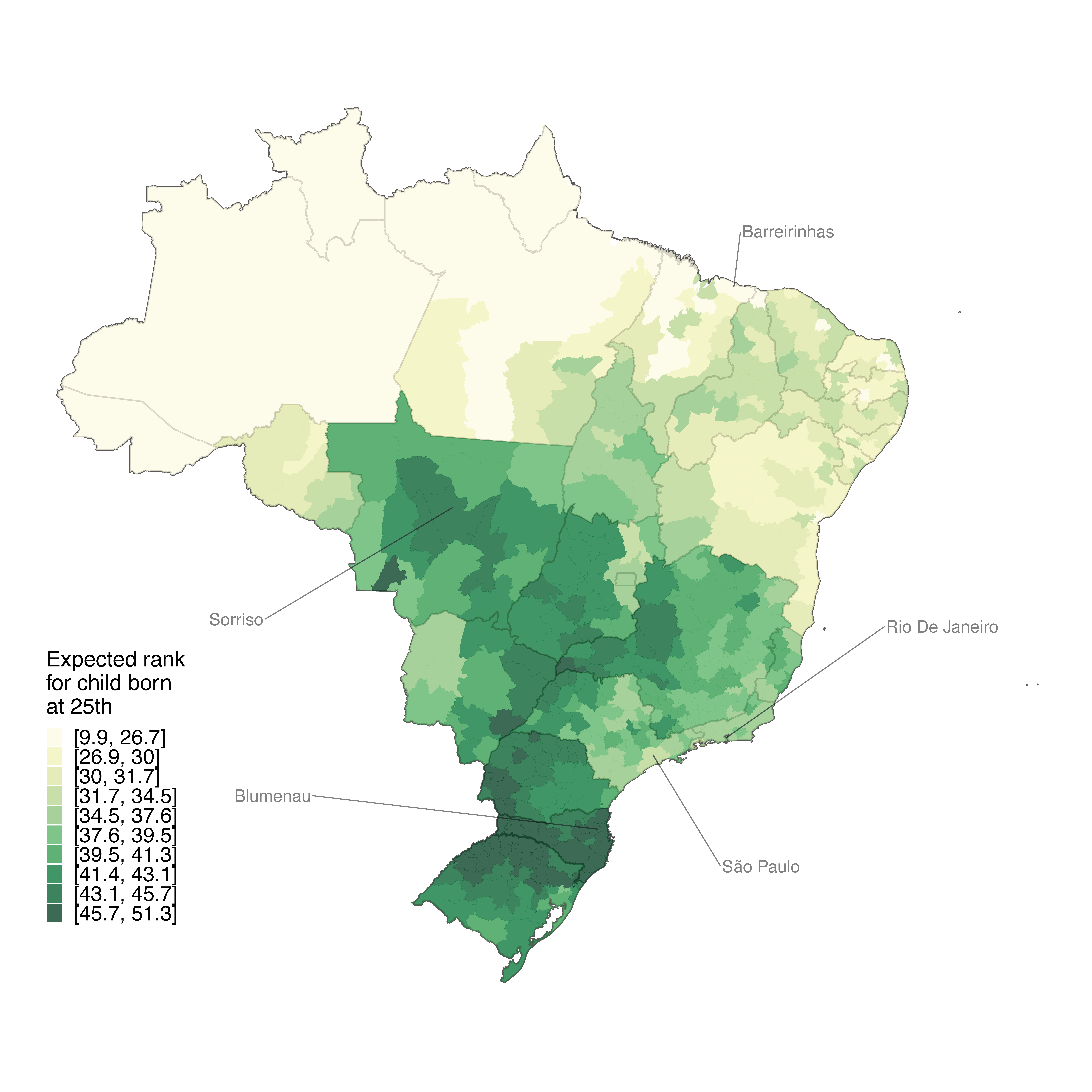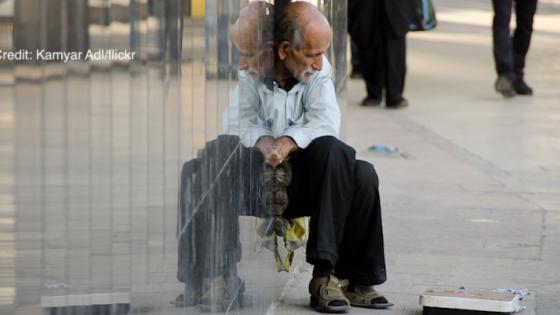The extent to which the success of children depends on the income of their parents is a question that attracts huge interest across societies. In fact, intergenerational mobility (IGM) is a long-standing interest in the social sciences and public debate as well. Numerous studies have used survey data to consistently document that parental income is a relevant predictor of a child’s income on reaching adulthood, and that the strength of this association substantially varies across countries (see e.g. Narayan et al. 2018). More recently, a new wave of studies (starting with Chetty et al. 2014) have used big tax data to study IGM. These studies track entire cohorts of children, linking their income to that of their parents over many years, and opening the way for innovative analyses and new stylised facts. For instance, we have learnt that children of similar family income raised in neighbouring post codes may have very different chances of succeeding in adulthood (Chetty et al. 2014, Chyn and Katz 2021), and that these differences reflect, to a large extent, causal place effects rather than sorting into these areas (Chetty and Hendren 2018, Deutscher 2020).
However, these studies cover only a handful of rich countries in North America, Europe, and Australia, while IGM is a particularly pressing issue in developing countries due to higher inequality and poverty rates. It is only very recently that researchers have tried to document stylised facts about intergenerational mobility and elicit the drivers of mobility in the developing world; examples come from Africa (Alesina et al. 2019), India (Munshi 2017), and Colombia (Laajaj et al. 2022).
In a recent study (Britto et al. 2022), we expand the wave of large-scale studies on income mobility by using, for the first time, tax data from an entire developing country. Brazil is known for being a land of extreme income inequality, with a Gini index ranging in recent decades from .50 to .60 – one of the highest in the world.
We are able to track the incomes of millions of children born in the 1980s and link them to the incomes of their parents. In addition, we combine these data with multiple administrative data sources, allowing us to track several important outcomes such as formal employment, occupational choices, education, welfare dependency, victimisation, and mortality. We use these data to provide a comprehensive description of IGM and unveil new facts about social mobility in Brazil.
Despite the richness of these administrative sources, accurately measuring IGM is challenging in the context of a developing country such as Brazil. Because a large proportion of individuals typically work in the informal economy, their (informal) income is not tracked in administrative data (e.g. tax or formal employment records). For instance, around 40% of Brazilian workers were employed informally in 2019.
A key innovation of our work is proposing a method for combining administrative and survey data sources to measure overall income for any individual in the population. Our method predicts the informal income for each individual in the population by training a Random Forests machine-learning model on large-scale household surveys. The prediction is based on a rich set of individual characteristics that can be observed in both the administrative and the survey data, such as education, occupation, age, gender, race, and location. Our final income measure – the sum of formal income, accurately measured in tax and employment data, and predicted informal income – is available for all individuals in the population. We propose several validation exercises studying the nature and the impact of measurement error in the prediction process for informal income. We also develop alternative approaches that fully waive the need to predict informal income and validate our main estimates. Overall, we hope that these methods may be for useful for other studies tackling income measurement issues related to the underground economy, which is also non-negligible in some developed countries (see e.g. Medina and Schneider 2018), and may be useful for other work studying IGM in developing countries with large-scale administrative data (recent notable examples include Asher et al. 2021, Geng 2020, Leites et al. 2022, Meneses 2021).
What is the actual extent of intergenerational mobility in Brazil?
To measure IGM, we rank parents and children in their respective income distributions. In Figure 1, we plot the average income percentile of children in adulthood (ages 25–29) over each percentile of parental income when those children were growing up (ages 3–18). On average, a 10 percentile increase in parental income is associated with a 5.5 percentile increase in child income during adulthood, implying a rank-rank correlation of .55. We also document an intergenerational income elasticity – an alternative measure of IGM – of .5, meaning that a 10% higher parental income is associated with a 5% higher child income in adulthood.
Figure 1 Baseline mobility curve in Brazil
Note: The figure shows the relationship between parental and child income ranks at the national level, for our main sample (1988-1990 cohorts). For each parental income percentile, it plots the mean (blue dots), median (red triangles), and inter-quartile range (shaded area) of child income range during 2015-2019, i.e. at age 25-31. Parental income is the sum of father's and mother's average income when children are aged 3-18. The figure also displays our absolute and relative mobility measures.
The transition matrix in Figure 2 shows the probability that children born in different quintiles of the income distribution move to other quintiles in adulthood. Strikingly, only 2.5% of children born in the bottom quintile reach the top, while almost one in two children starting in the bottom and top quintiles remain in the same position in adulthood.
Figure 2 Transition matrix
Note: The figure shows the probability that children born to parents in a given quartile of the parental income distribution (horizontal axis) move to a given income quartile in adulthood (vertical axis). Darker red indicates higher probability.
Compared to the evidence available for rich countries, Brazil stands out as an extremely immobile country. For instance, Chetty et al. (2014) and Acciari et al. (2021) measure intergenerational rank correlations of 0.34 and 0.22 in the US and Italy, respectively – much lower than the correlation of 0.55 that we find for Brazil. Given that Brazil also exhibits a higher level of income inequality, these findings line up well with the “Great Gatsby curve” (so called by Alan Krueger), which depicts a positive relationship between income inequality and intergenerational income persistence; see Figure 3.
Figure 3 The Great Gatsby curve
Note: The figure plots the relationship between the Gini index (horizontal axis) and relative mobility (vertical axis) using our estimates for Brazil and available rank-based mobility estimates for developed countries.
Our finding that Brazil is not only a land of income inequality but also of low IGM is in line with earlier survey-based studies (see e.g. Doruk et al. 2019, Dunn 2007, Leone 2019, Mahlmeister et al. 2019). However, a key advantage of using large-scale data is that it allows for a thorough description of heterogeneity in mobility patterns by individual characteristics and geographical area.
How does IGM vary by gender and race?
Upward mobility varies dramatically by gender and race. A girl born to below-median income parents ranks on average 14 percentiles below boys born with the same parental income, and this gap is not affected when we restrict the comparison to siblings. In turn, whites rank on average 7 percentiles above non-whites with the same parental income, and the gap is larger for below-median income families.
What about the link between parental income and other long-term outcomes?
We also explore the association of parental income with a broad array of long-term outcomes. In Figure 4, we document that children born to poorer parents are at higher risk of dying at an early age, of experiencing teen pregnancy or being the victim of a crime, and of receiving welfare benefits from the government; in addition, they receive less formal education, and are less likely to find employment in prestigious occupations (e.g. as a lawyer or doctor).
Figure 4 Parental income and children’s long-term outcomes
Note: The figure plots the relationship between parental income, measured when children are aged 3-18, and several children's long-term outcomes in adulthood.
Does the place where children grow up make a difference? Are such differences driven by causal place effects?
Although social mobility is generally low in the land of inequality, different areas offer different opportunities to poor children, defined as those born in families with incomes below the national median income. The map in Figure 5 shows the average income rank reached by poor children who grew-up in each of the 510 Brazilian commuting zones.
Figure 5 Upward mobility across Brazilian commuting zones
Note: This figure visualises spatial variation in absolute mobility (in deciles) across Brazil's 510 immediate geographical regions (IGRs) for our main sample (1988-1990). Parent and child incomes are ranked in the national income distribution and measured when children are aged 3-18 and 25-31. Absolute mobility indicates the expected rank for children in below-median income families. Darker green tones indicate higher absolute mobility. Children are assigned to IGRs according to the location of their fathers in 2000.
Interestingly, the largest and most dynamic urban centres in Brazil, such as São Paulo and Rio de Janeiro, do not offer the best chances for poor children. Instead, poor children fare best when growing up in the Central-West – in the heart of the soy-driven economic growth, and in southern regions that experienced intense European immigration in the late 19th century. On the opposite side, children born in the Northeast semiarid region and in the Amazon face the lowest chances of ascending socially.
By comparing siblings that moved between regions at different ages, we estimate that about 57% of the substantial mobility gap across Brazilian regions is due to causal place effects. Therefore, some areas in Brazil offer significantly better opportunities for low-income children, notwithstanding the high levels of income persistence at the national level.
What factors are correlated to better mobility?
When correlating absolute mobility with an array of local characteristics across regions of Brazil, education quality has by far the strongest predictive power. It is followed by indicators on family structure, demographics (including racial composition), household characteristics, and local infrastructure.
Conclusion
Our study contributes to current policy debates by generating new facts about income mobility in Brazil, and to the broader literature by providing methods to tackle the challenge of informal income measurement. It provides an accurate description of (im)mobility patterns, documenting deep disparities for children with different income and socioeconomic backgrounds. Hard evidence on such aspects may contribute to shifting people’s perceptions and potentially their preferences for distributive policies (Alesina et al. 2018). Moreover, revealing dramatic penalties for long-neglected groups and places – in particular, non-whites and the North-Northeast of the country – can encourage public policies targeted at increasing access to opportunities. Second, even though Brazil has long been perceived as a place of high inequality and low mobility, our investigation unveils that some areas within Brazil offer much better chances for poor children to climb the social ladder. It also points to some factors that predict higher upward mobility, such as the quality of public education. In addition to documenting IGM patterns in detail, an important direction for future research would be investigating how different factors and policies can foster upward mobility.
References
Acciari, P, A Polo and G L Violante (2022), “And Yet It Moves: Intergenerational Mobility in Italy”, American Economic Journal: Applied Economics 14, 118–163.
Alesina, A, S Hohmann, S Michalopoulos and E Papaioannou (2019), “Intergenerational Mobility in Africa”, VoxEU.org, 20 June.
Alesina, A, S Stantcheva and E Teso (2018), “Intergenerational Mobility and Preferences for Redistribution”, American Economic Review 108, 521–554.
Asher, S, P Novosad and C Rafkin (2021), Intergenerational Mobility in India: Estimates From New Methods and Administrative Data.
Bratberg, E, J Davis, B Mazumder, M Nybom, D D Schnitzlein and K Vaage (2017), “A Comparison of Intergenerational Mobility Curves in Germany, Norway, Sweden, and the US”, Scandinavian Journal of Economics 119, 72–101.
Britto, D G C, A Fonseca, P Pinotti, B Sampaio and L Warwar (2022), "Intergenerational Mobility in the Land of Inequality", IZA Discussion Paper 15611.
Chetty, R and N Hendren (2018), “The Impacts of Neighborhoods on Intergenerational Mobility I: Childhood Exposure Effects”, Quarterly Journal of Economics 133, 1107–1162.
Chetty, R, N Hendren, P Kline, E Saez and N Turner (2014), “Is the United States Still a Land of Opportunity? Recent Trends in Intergenerational Mobility”, American Economic Review 104, 141–147.
Chyn, E and L F Katz (2021), “Neighborhoods Matter: Assessing the Evidence for Place Effects”, Journal of Economic Perspectives 35, 197–222.
Connolly, M, M Corak and C Haeck (2019), “Intergenerational Mobility Between and Within Canada and the United States”, Journal of Labor Economics 37, S595–S641.
Deutscher, N (2020), “Place, Peers, and the Teenage Years: Long-Run Neighborhood Effects in Australia”, American Economic Journal: Applied Economics 12, 220–249.
Deutscher, N and B Mazumder (2020), “Intergenerational mobility across Australia and the stability of regional estimates”, Labour Economics 66.
Doruk, Ö T, H B Yavuz and F Pastore (2019) “Intergenerational Mobility: An Assessment for Latin American Countries”, Global Labor Organization (GLO) Discussion Paper Series, no. 343.
Dunn, C (2007), “The Intergenerational Transmission of Lifetime Earnings: Evidence from Brazil”, BE Journal of Economic Analysis and Policy 7, 1–42.
Geng, Y (2020), Intergenerational Mobility in China across Space and Time.
Heidrich, S (2017), “Intergenerational mobility in Sweden: a regional perspective”, Journal of Population Economics 30, 1241–1280.
Helsø, A L (2021), “Intergenerational Income Mobility in Denmark and the United States”, Scandinavian Journal of Economics 123, 508–531.
Laajaj, R, A Moya and F Sánchez (2022), "Equality of opportunity and human capital accumulation: Motivational effect of a nationwide scholarship in Colombia”, VoxDev.org.
Leites, M, X Ramos, C Rodríguez and J Vilá (2022), Intergenerational mobility and top income persistence for a developing country: estimates using administrative data from Uruguay.
Leone, T (2019), “The geography of intergenerational mobility: Evidence of educational persistence and the ‘Great Gatsby Curve’ in Brazil”, GIGA German Institute of Global and Area Studies, working paper no. 318.
Mahlmeister, R, S G Ferreira, F Veloso, N Menezes-Filho and B K Komatsu (2019), “Revisitando a Mobilidade Intergeracional de Educação no Brasil", Revista Brasileria de Economia 73.
Medina, L and F Schneider (2018), Shadow Economies Around the World: What Did We Learn Over the Last 20 Years?
Meneses, F (2021), Intergenerational Mobility in Chile: A year-to-year analysis of a national cohort of students.
Munshi, K (2017), “Caste and Economic Mobility in India”, VoxDev.org.
Narayan, A, R Van der Weide, A Cojocaru, C Lakner, S Redaelli, D G Mahler, R G N Ramasubbaiah and S Thewissen (2018), “Fair Progress?: Economic Mobility across Generations around the World”, Washington, DC: World Bank.
